That ANA turboprop sitting on the tarmac wasn’t my first choice. I’d pictured myself on one of those sleek 787s, but a last-minute booking meant taking whatever got me from point A to Tokyo. The propellers looked sketchy. The guy next to me at the gate was eating the strongest-smelling sandwich I’ve ever encountered at 6 AM. Welcome to international travel.
But here’s the thing about Japan – it starts working it’s magic before you even land. Somewhere over the Pacific, the flight attendant bowed while handing me a hot towel and I knew this wasn’t going to be like anywhere else I’d been.
The Top 3 Languages Spoken in Japan
Before getting into my chaos, let’s address something that surprised me. Everyone assumes Japan is linguistically homogeneous, but it’s more complex than that.
1. Japanese (125 million speakers)
Obviously. But even “Japanese” isn’t just one thing – there’s standard Tokyo dialect, then Kansai-ben in Osaka (completely different vibe), Okinawan (barely comprehensible to mainland Japanese) and dozens of regional variations. My attempts at textbook Japanese in Kyoto got me gentle corrections from locals who found my Tokyo accent amusing.
2. English (Variable proficiency)
Not officially second, but definitely the most studied foreign language. Thing is, “studied” doesn’t mean “spoken.” Most Japanese learn English for 6+ years in school but freeze when you ask for directions. Younger people in Tokyo? Pretty decent. Rural onsen owner? Hand gestures and Google Translate.
3. Korean & Chinese (Combined ~1 million)
The significant Korean minority (especially in Osaka) plus Chinese residents and tourists make these the next most common. You’ll see Korean on signs in certain neighborhoods and Chinese tourists were everywhere I went – affecting menus, signage and service approaches.
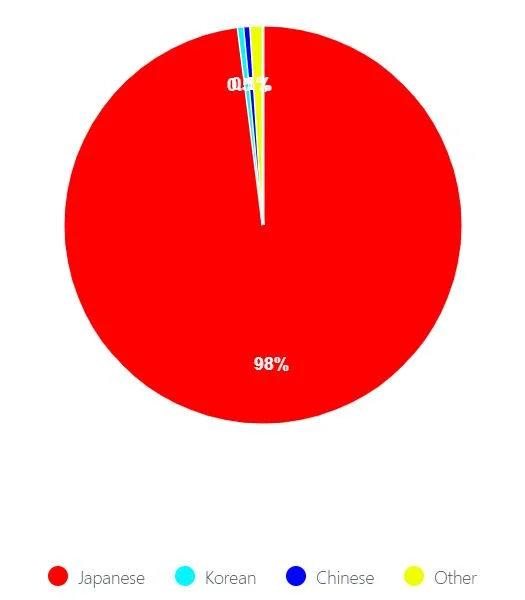
Tokyo: Organized Chaos That Actually Works
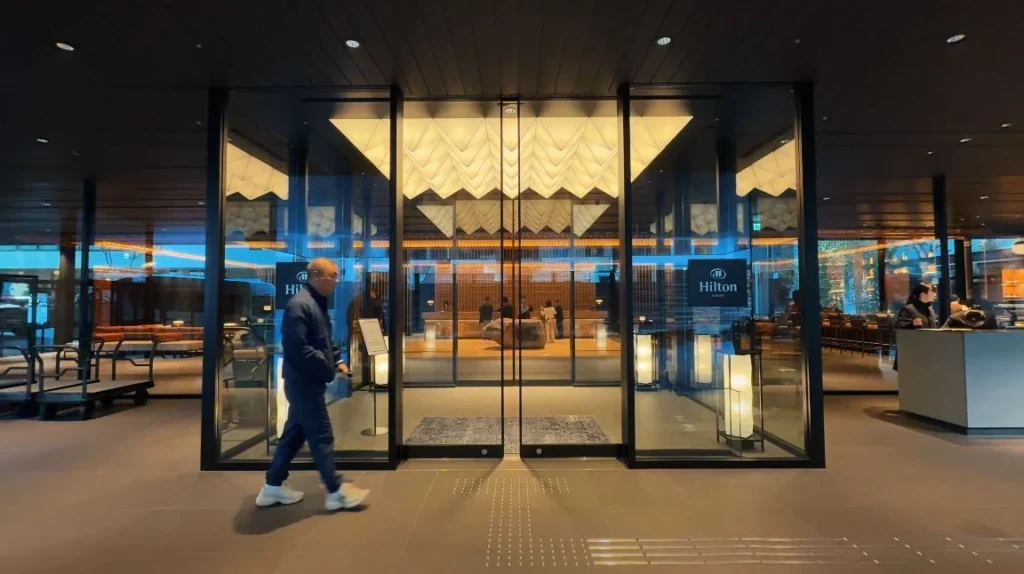
My first night at the Hilton in Tokyo, I couldn’t sleep. Jet lag? Sure. But mostly it was the view from my window – this impossible sprawl of lights that never seemed to end. NYC feels vertical. Tokyo feels infinite horizontally.
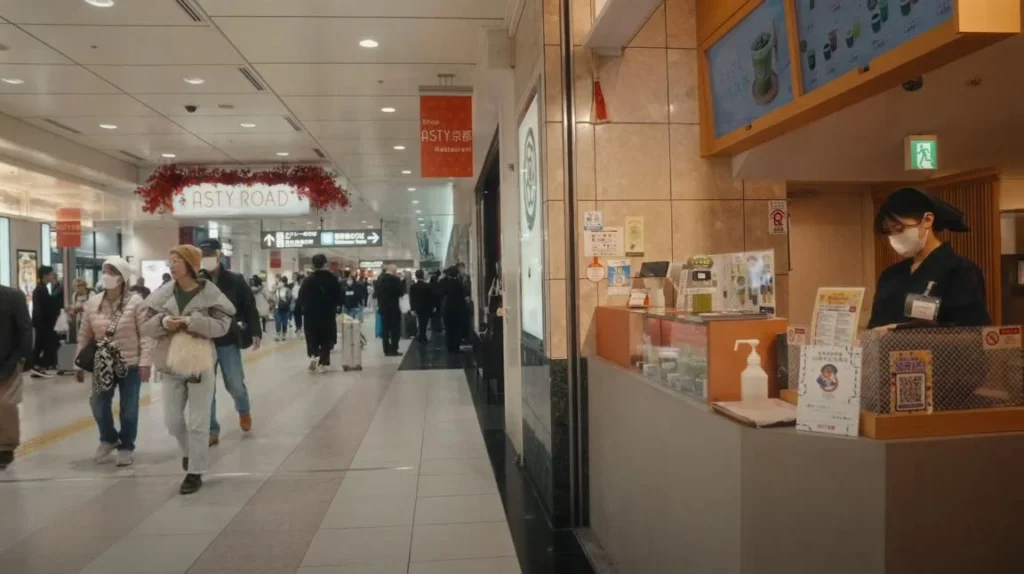
Woke up at 4 AM (thanks, circadian rhythm) and decided to walk. Found myself in what I later learned was called “Tasty Road” – this underground shopping labyrinth beneath Tokyo Station. Even at that ungodly hour, salarymen were already heading to work, convenience stores were fully staffed and this one ramen shop had a line. A LINE. At 4:30 AM.
The efficiency here borders on supernatural. Trains arrive to the second – not minute, second. I watched a conductor apologize profusely because we were 90 seconds late. In New York, that’s early. The subway map looks like someone threw spaghetti at a wall, but somehow it makes perfect sense after day two. Miss your stop? There’s probably another train in 3 minutes. Maybe 5 if you’re unlucky.
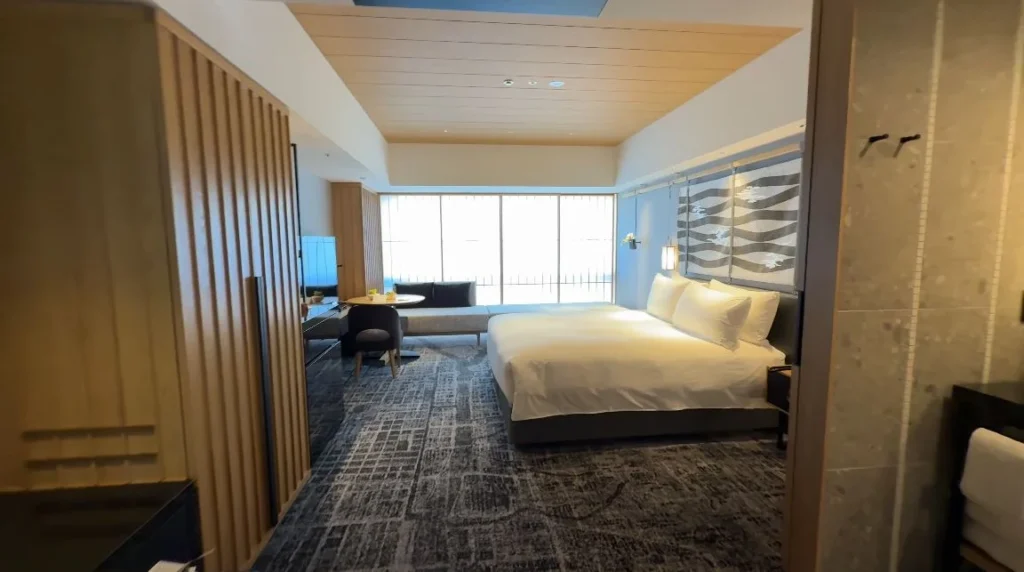
But Tokyo’s weird contrasts mess with your head. You’ll walk from a street of 400-year-old wooden houses directly into a district that looks like Blade Runner had a baby with a Nintendo game. Vending machines sell everything – and I mean everything. Hot coffee, cold ramen, umbrellas, ties, fresh eggs, Buddhist charms. Saw one selling live rhinoceros beetles at 2 AM. Why? Japan doesn’t explain itself.
The Food Situation Started Strong
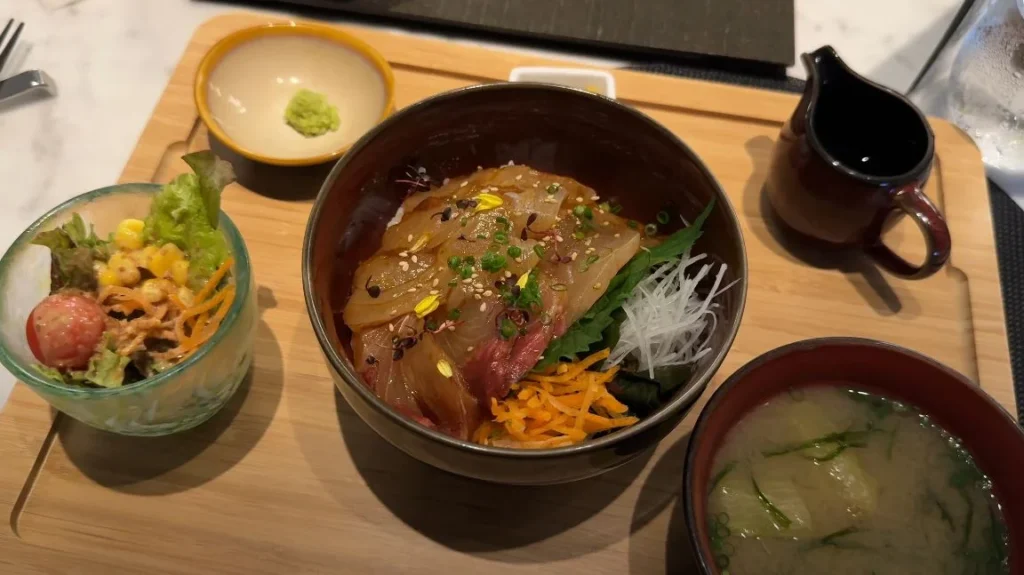
First proper meal: beef bowl from this tiny place with 8 seats. The chef/owner/only employee looked personally offended when I tried to tip. The beef was stupid good – that kind of tender where you question every previous meat experience. ¥800 (like $6). In Manhattan, this would’ve been $25 and half as good.
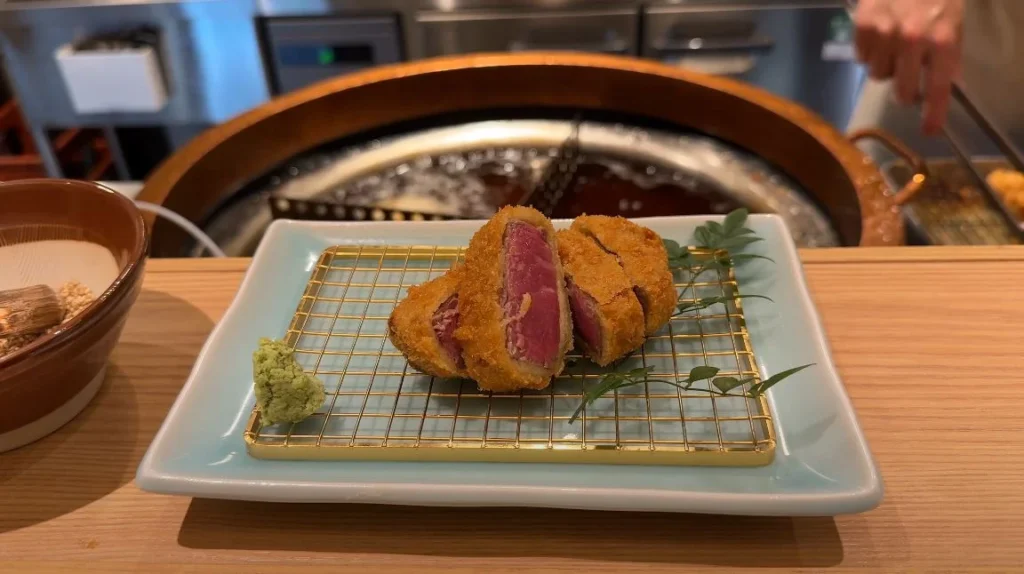
Katsu everywhere. Good katsu, bad katsu, convenience store katsu at 3 AM katsu. The trick, I learned from watching locals, is the sauce-to-meat ratio. Too much and you’re a tourist. Too little and you’re trying too hard. That perfect drizzle that pools just slightly in the cabbage? That’s the zone.
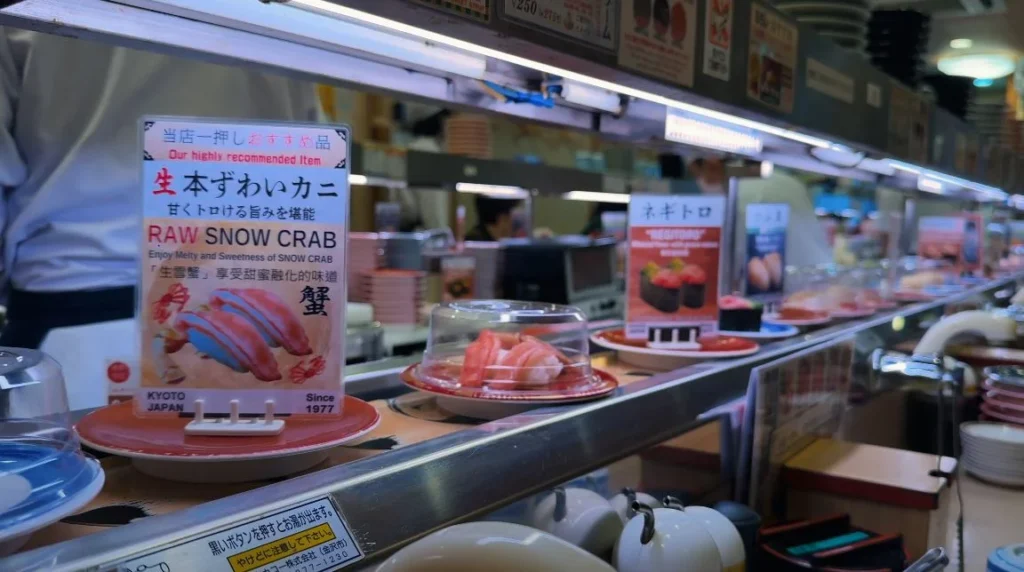
Conveyor belt sushi was where things got educational. Not the quality – that was fine – but the politics of it. There’s an unspoken rule about not taking the plate that someone upstream is clearly eyeing. I violated this rule. The grandmother gave me a look that transcended language barriers. I’m still sorry, obaa-san.
Kyoto: Where Instagram Goes to Feel Inadequate
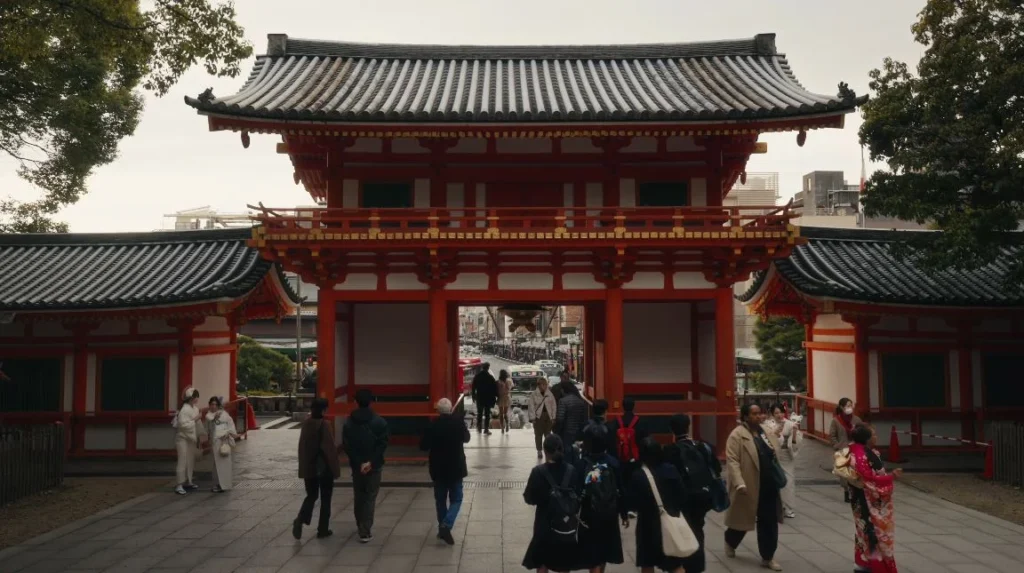
The bus from Tokyo to Kyoto takes about 6 hours if you’re cheap like me. Shinkansen does it in 2, but costs three times more. The bus was worth it just for the views of Mount Fuji, plus the service area stops were anthropological goldmines. Where else can you buy fresh sushi, regional kit-kat flavors (wasabi, sweet potato, sake) and watch truckers eat full course meals at 10 AM?
Kyoto hits different. If Tokyo is your overachieving cousin who went to MIT, Kyoto is the artistic aunt who studied philosophy in Prague and makes her own ceramics.
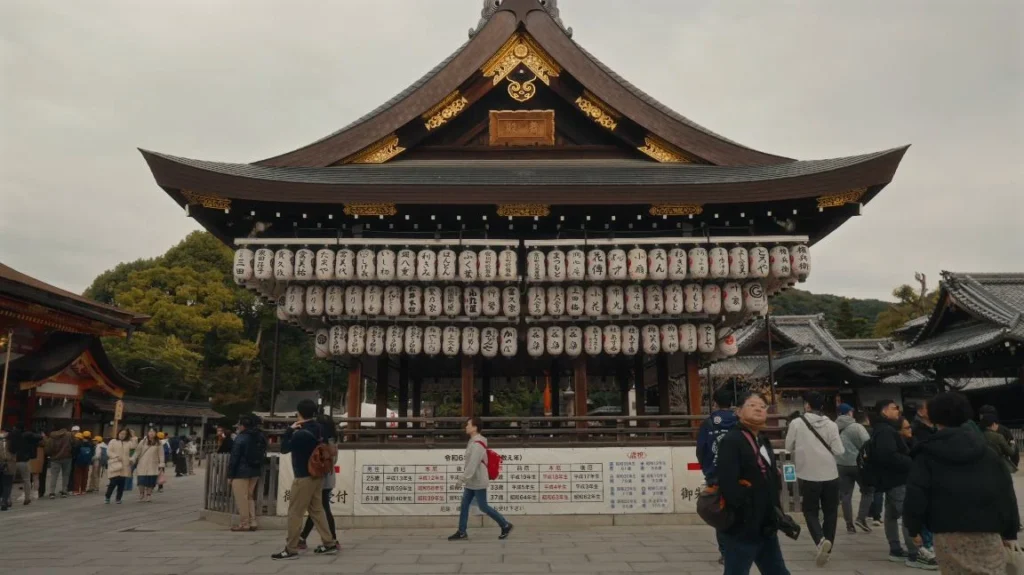
First morning, I’m at this temple by 7 AM (jet lag has it’s advantages). Maybe twelve other people there. The lanterns aren’t even lit anymore – it’s those paper ones from some festival. But the way morning light filtered through the wood, the sound of someone sweeping stones in that methodical way… I get why people come here to find themselves. I mostly found that I needed coffee, but still.
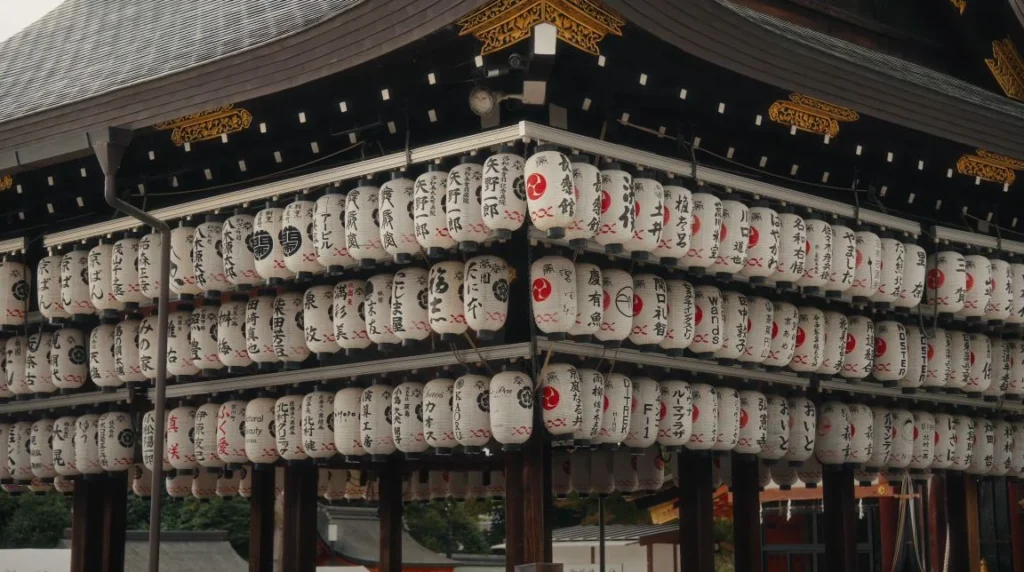
Every temple has it’s thing. This one’s got a thousand lanterns. That one has a golden pavilion. Another one has a rock garden that’s supposed to represent the cosmos or consciousness or something. I stared at it for twenty minutes waiting for enlightenment. Mostly I wondered if the monks ever got tempted to rearrange the rocks just to mess with people.
The Bamboo Forest Situation
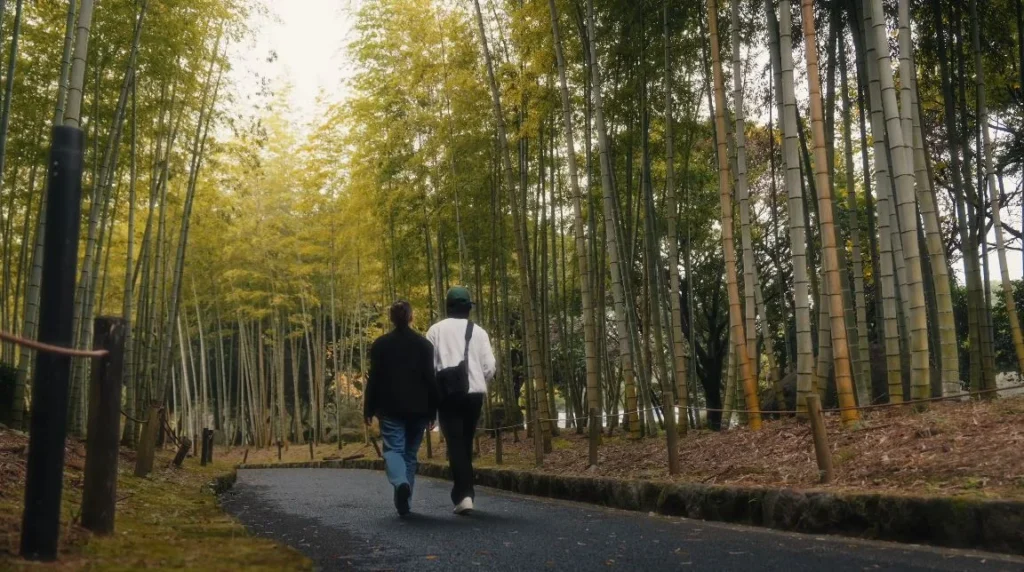
Arashiyama bamboo grove. You’ve seen the photos. What they don’t capture is the sound – this hollow knocking when wind moves through them, like the world’s most organic wind chime. Also not captured: the absolute zoo of tourists at midday. I’m talking selfie stick jousting, couples doing full photoshoots, that one guy who brought a drone (immediately shut down by security).
Went back at 6 AM next day. Completely different place. Just me, two photographers who nodded silently and this old man practicing tai chi. The bamboo doesn’t care about your Instagram. It was here before smartphones, it’ll be here after we’ve all uploaded ourselves to the cloud or whatever.
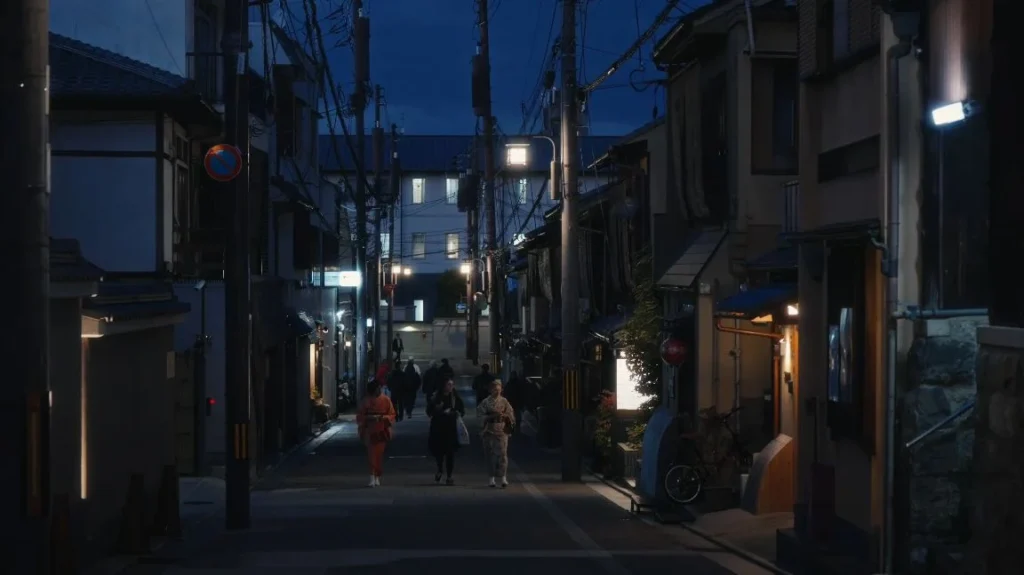
Gion district at dusk is a whole production. Not just the geishas (who move faster than you’d think and definitely don’t want photos), but everyone participating in this cultural theater. Tourists in rented kimonos stumbling in wooden shoes, locals pretending the tourists don’t exist, shops that look lifted from the Edo period selling ¥50 keychains made in China.
Had dinner at this kaiseki place that cost more than my flight. Twelve courses, each one more confusing than the last. Fish sperm sac? Sure. Flower petals that taste like soap? Why not. The chef explained each dish in rapid Japanese while I nodded like I understood. The couple next to me were having the same experience. We bonded over mutual confusion. They were from France. We’re still Instagram friends.
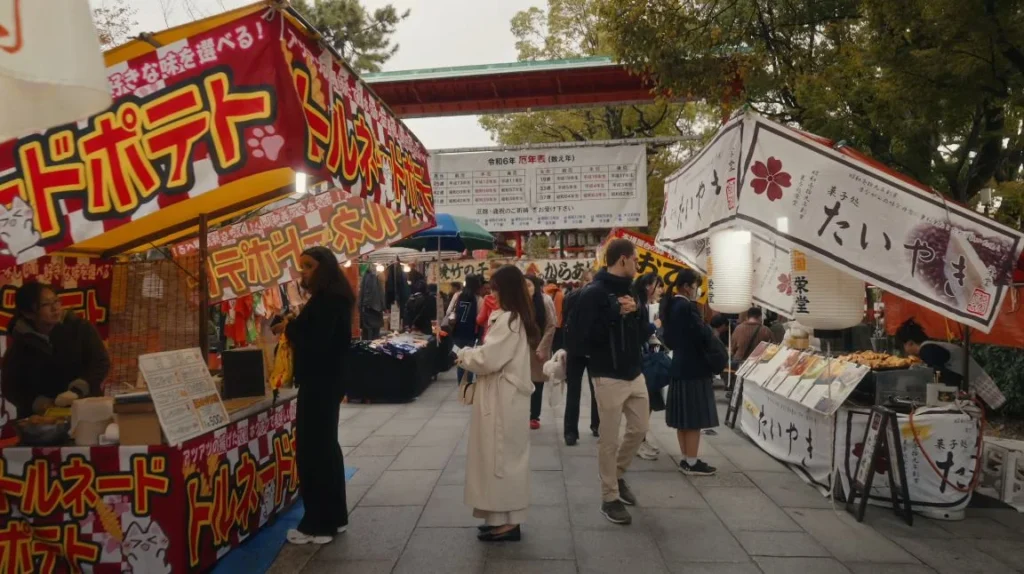
But the real Kyoto food is in the street festivals. Stumbled into one near the station – no idea what it was celebrating. Could’ve been the god of adequate parking or the annual celebration of that time someone didn’t burn the city down. Japanese festivals don’t always translate.
What matters: takoyaki that burns your mouth but you keep eating, yakitori where the smoke follows you no matter where you stand and this thing called candied fruit that’s basically diabetes on a stick but who’s counting. Old ladies manning stalls who’ve probably been doing this since before my parents were born, teenagers in those weird platform shoes that shouldn’t work but do, everyone united in the pursuit of eating things on sticks.
The Onsen Experience: Getting Naked with Strangers
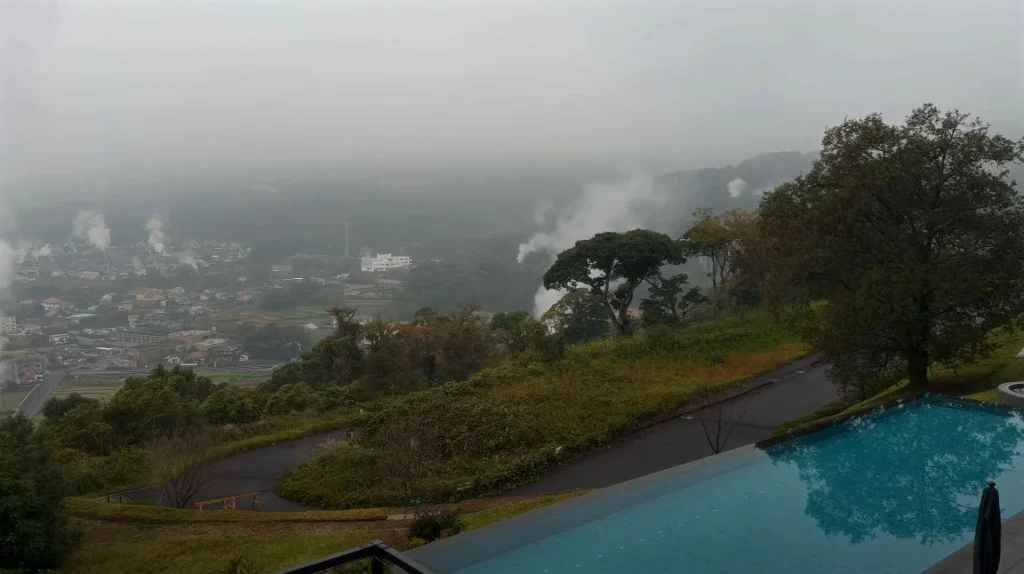
Left Kyoto for the mountains. The ryokan (traditional inn) was one of those places where you question if you can afford to breathe the air. They email you beforehand asking about dietary restrictions, arrival time, what color you’d like your room’s flower arrangement. I’m barely responsible enough to match my socks.
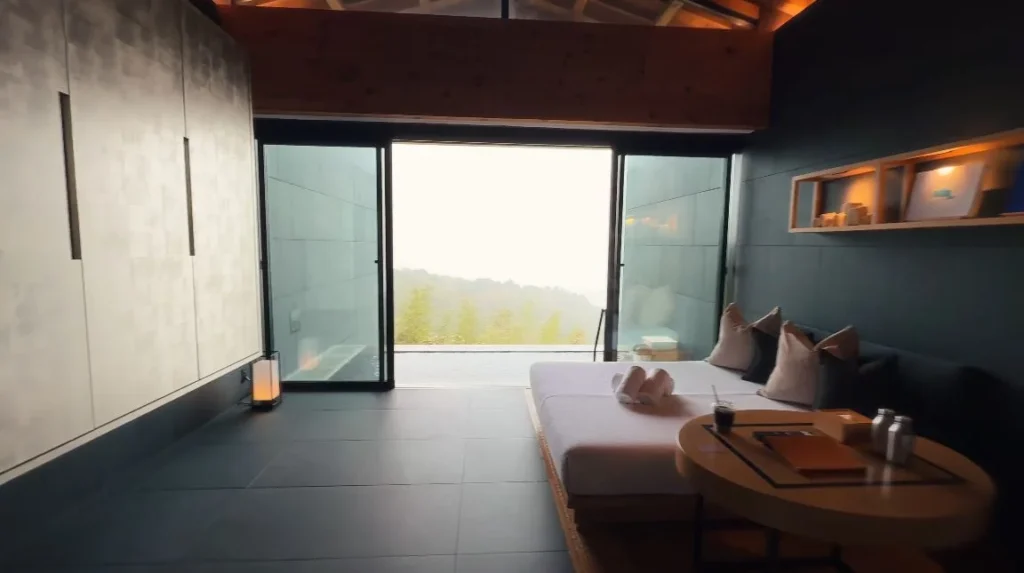
The room was maximum Japan – tatami mats, sliding doors, a view that looked fake it was so perfect. No bed, just futons they’d set up later. No chairs either. You sit on the floor like humans did for thousands of years before we got soft.
Then came the onsen orientation. The staff member, maybe 4’11” and looking like she could benchpress me, explained the rules with military precision. Shower first. THOROUGHLY. No swimsuits. No tattoos (I lied, kept my shoulder covered with the tiny towel). Don’t put the towel in the water. Don’t swim. Don’t splash. Don’t exist too loudly.
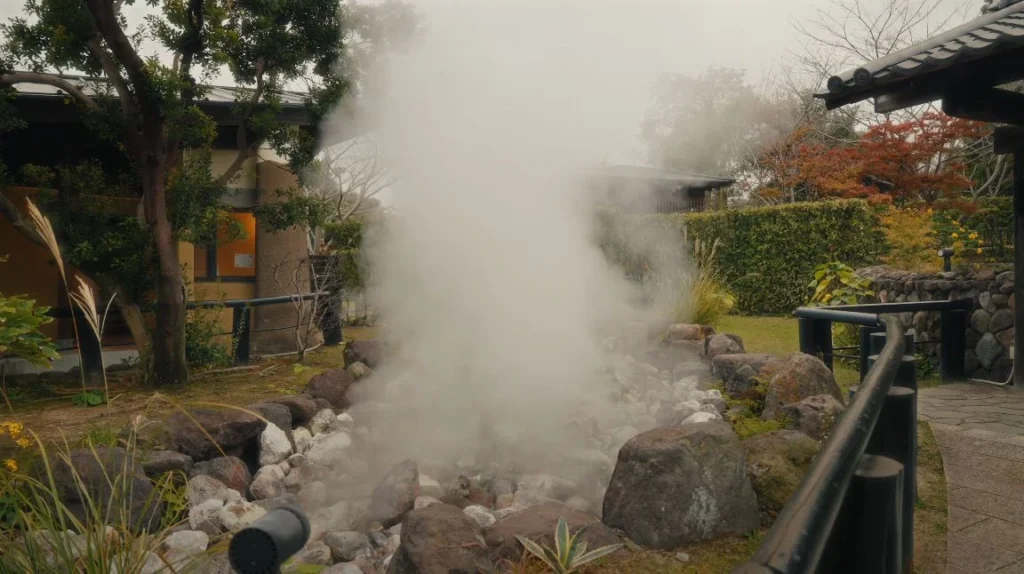
My first time walking into that outdoor bath, naked as evolution intended, with about fifteen Japanese businessmen already soaking, was character building. They didn’t care. Nobody cares. Your western body shame is your problem.
The water was approximately the temperature of the sun’s surface. You ease in millimeter by millimeter while your body argues with your brain about whose idea this was. Then suddenly you’re in and it’s perfect and you understand why Japanese people live longer than everyone else. It’s not the diet. It’s the regular practice of boiling yourself while staring at mountains.
Guy next to me started talking. My Japanese is garbage, his English was worse, but somehow we discussed baseball, the weather and what I think was either his divorce or his dog dying – context was unclear. Onsen conversations hit different when everyone’s naked. Hard to maintain pretense when your pretense is in a locker.
The Food Got Weird (Good Weird)
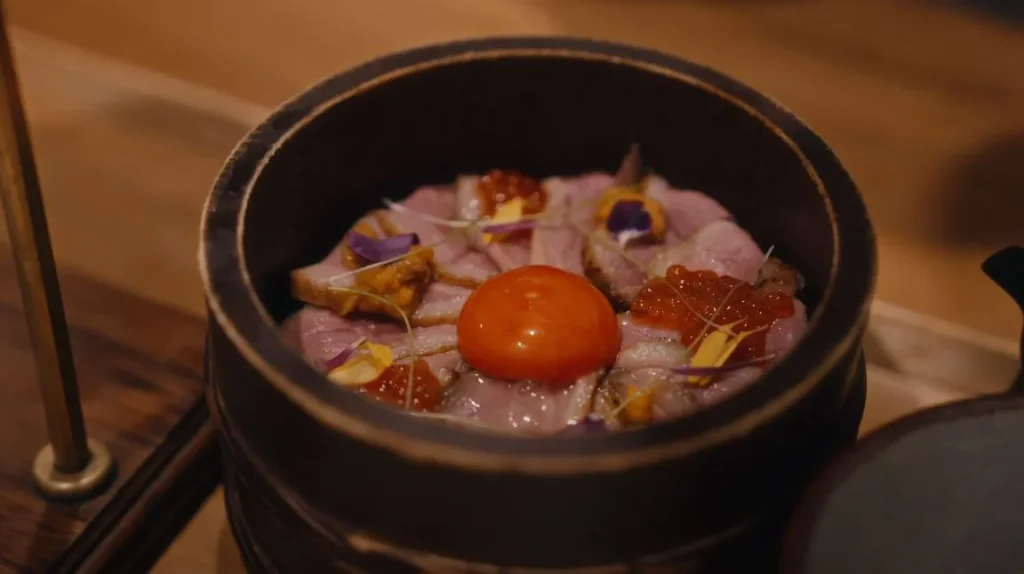
Ryokan dinner was an event. They bring course after course to your room while you sit there in a yukata feeling underdressed and overfed. Raw horse? Had it. Some kind of mountain vegetable that tasted like dirt fucked a tree? Sure. Fish that was looking at me while I ate it? Absolutely.
The egg situation needs it’s own paragraph. This perfect egg yolk, sitting on what I think was tuna, surrounded by things I couldn’t identify if you paid me. The server waited for me to break it, watching like this was a religious ceremony. The yolk ran into everything, turned the whole dish into this creamy, salty, umami bomb that made me reconsider my relationship with eggs. I think about that egg more than I should.
Osaka: Where Personal Space Goes to Die
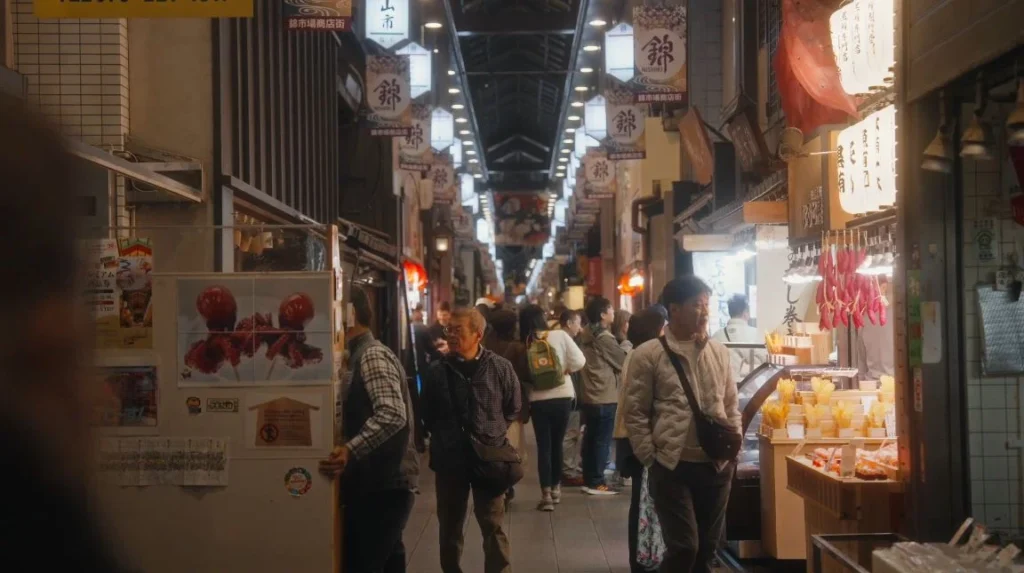
The train to Osaka from the mountain ryokan was supposed to take two hours. Took four because I got on the local instead of the express. Nobody told me there were different types. Well, they probably did, but in Japanese, which helps nobody (me).
Osaka doesn’t ease you in. First thing off the train, I’m in Namba station, which is less a station and more a underground city where five million people are simultaneously trying to get somewhere else. The energy is completely different from Kyoto’s zen garden vibes. If Kyoto meditates, Osaka chugs Red Bull.
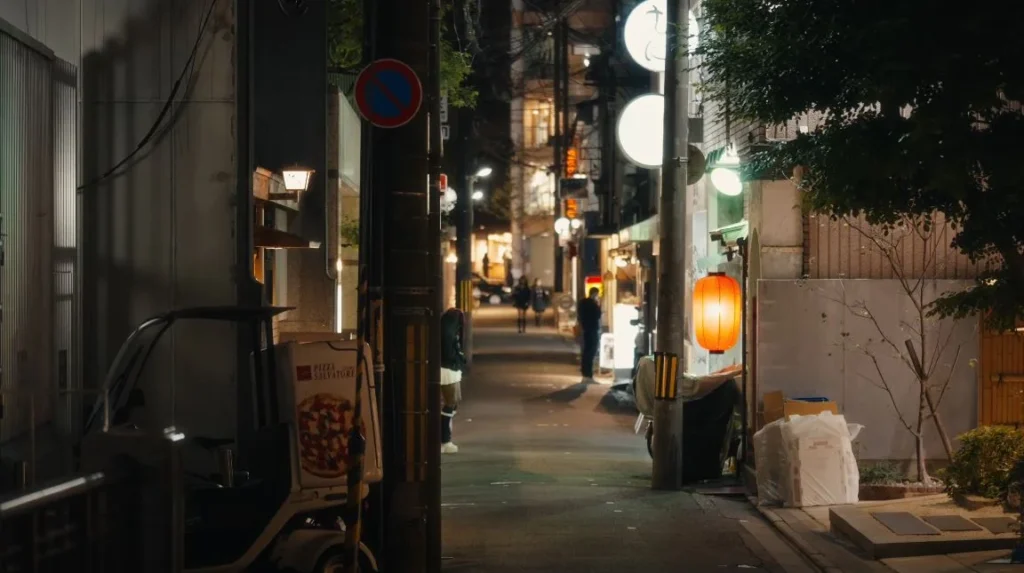
Dotonbori at night is sensory assault in the best way. Neon signs bigger than my apartment, mechanical crabs the size of cars, that running Glico man who’s been jogging in place since 1935. Every restaurant screams for attention. Not metaphorically – there are actual people yelling at you to come eat their ramen. One guy with a megaphone. At 11 PM. On a Tuesday.
Found this kushikatsu place down an alley that looked like it hadn’t been renovated since Japan had an emperor who meant it. The rule: no double dipping in the communal sauce. They had a sign in twelve languages. I watched a tourist double dip. The entire restaurant went silent. He was asked to leave. Politely, but firmly. The sauce is sacred.
Street Food Olympics
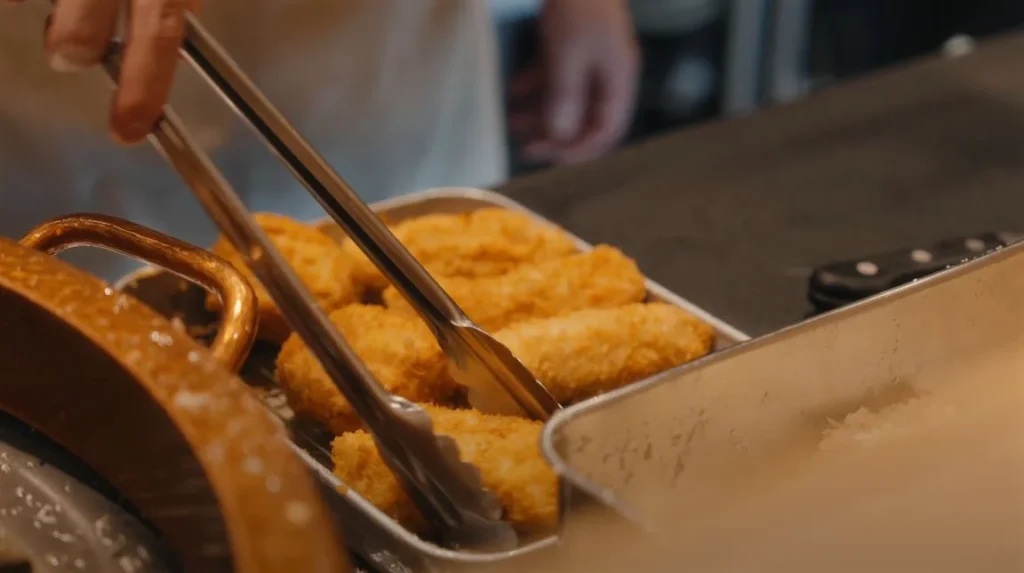
Street food in Osaka is a competitive sport. You haven’t lived until you’ve watched two octopus ball vendors passive-aggressively compete for customers through increasingly dramatic cooking performances. One guy was literally juggling takoyaki. His competitor started adding unnecessary flames. It escalated.
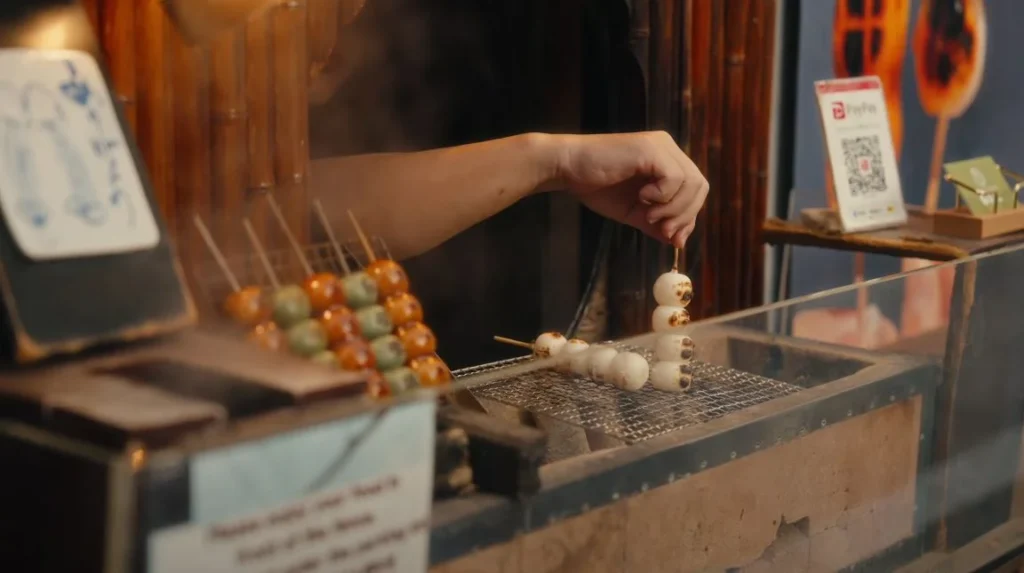
This old lady selling grilled mochi became my dealer. ¥100 for three balls on a stick, sweet soy glaze that caramelizes over charcoal. She recognized me by day three, started adding an extra one. We never spoke beyond “arigatou” and her laughing at my pronunciation, but we had something.
The basement food floors of department stores deserve their own documentary. Depachika, they’re called. Imagine the fanciest food hall you’ve ever seen, then multiply it by Japan. Perfect fruit that costs more than my hotel. Bento boxes that look like art. Free samples everywhere if you look confused enough (I wasn’t acting).
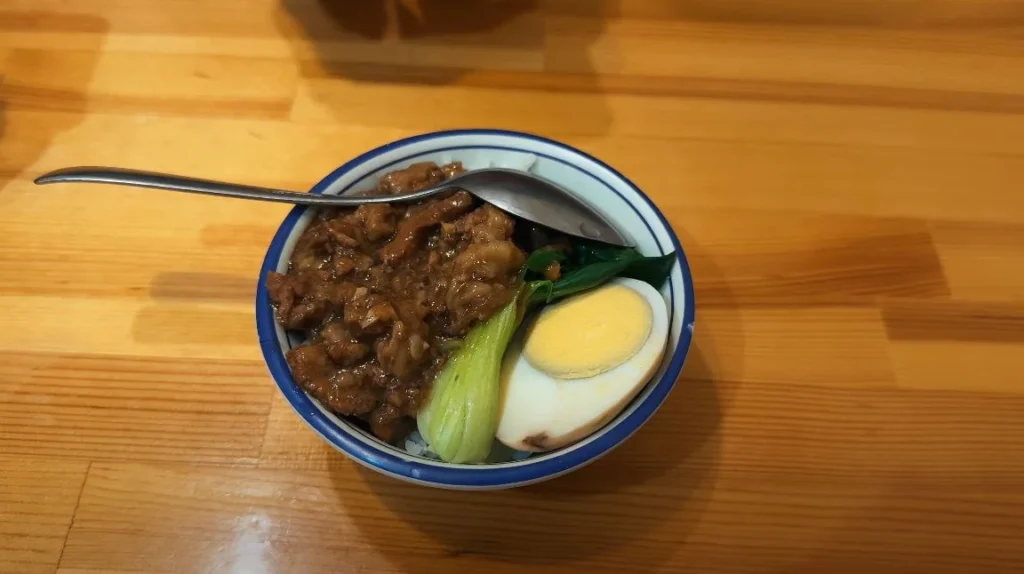
Weirdly, some of the best food wasn’t even Japanese. This Taiwanese joint near my hotel did lu rou fan (braised pork rice) that made me question reality. The owner was this Taiwanese guy who’d lived in Osaka for 30 years, spoke Japanese with an Osaka accent and Mandarin with a Japanese accent. Globalization is weird. The pork was perfect.
Convenience Store Culture: An Addiction Story
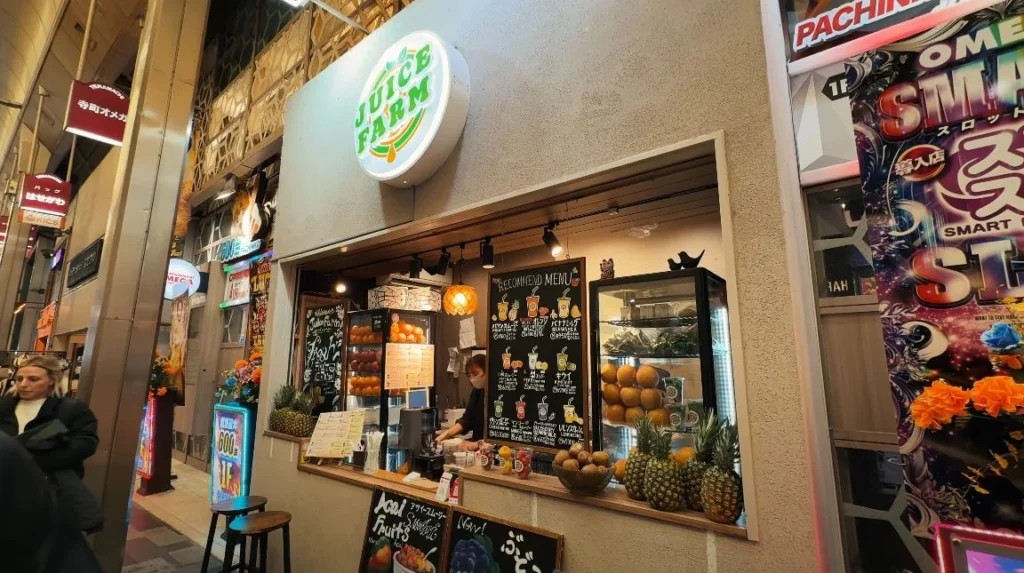
We need to talk about konbini. That’s convenience stores for the uninitiated and they’re not like 7-Eleven back home (though 7-Eleven exists here and is somehow amazing). These places are civilization’s peak achievement.
2 AM onigiri runs became my routine. Triangle rice balls with mystery fillings because I couldn’t read the labels. Salmon? Probably. Plum? Maybe. Something that might be tuna but could be cat food? Still ate it. The morning coffee is better than most cafes. The egg sandwiches have a cult following that I now understand.
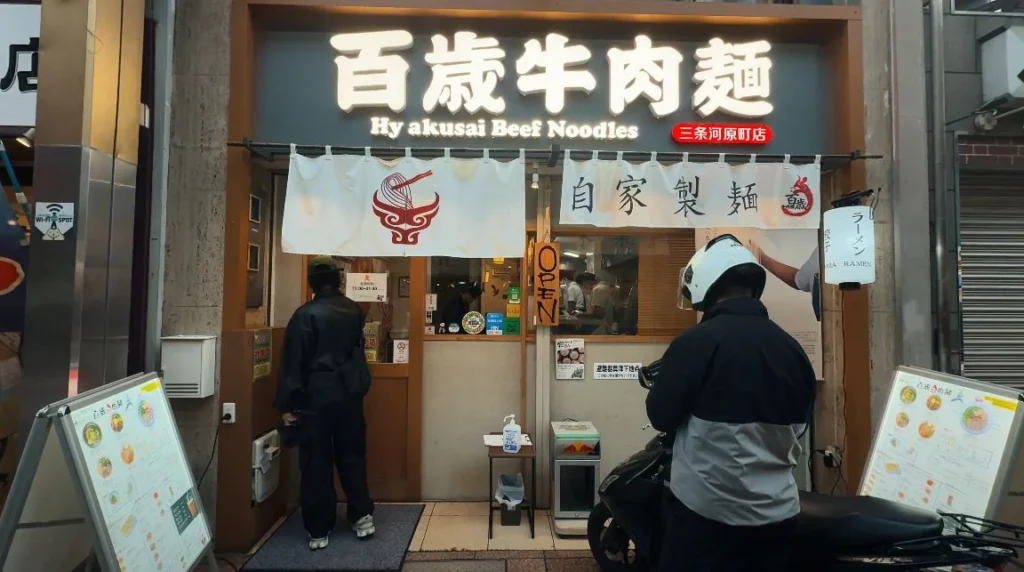
But the hot food section. THE HOT FOOD SECTION. Fried chicken that puts KFC to shame. Oden (miscellaneous things floating in broth) that you fish out yourself. Pasta that has no business being good from a convenience store but is. I ate convenience store meals I’d proudly serve to guests.
The bathroom situation needs addressing. Konbini bathrooms are cleaner than most restaurants anywhere else. Heated seats, those bidet functions that I was scared of at first but now miss desperately, buttons that make sounds to cover… other sounds. Some play music. One had more controls than my car.
Watched salarymen grab dinner and breakfast simultaneously at 11 PM. Saw a woman in a full business suit eating cup noodles while reading manga at 3 AM. Nobody judges convenience store life choices. It’s a neutral zone.
Transportation Adventures and Misadventures
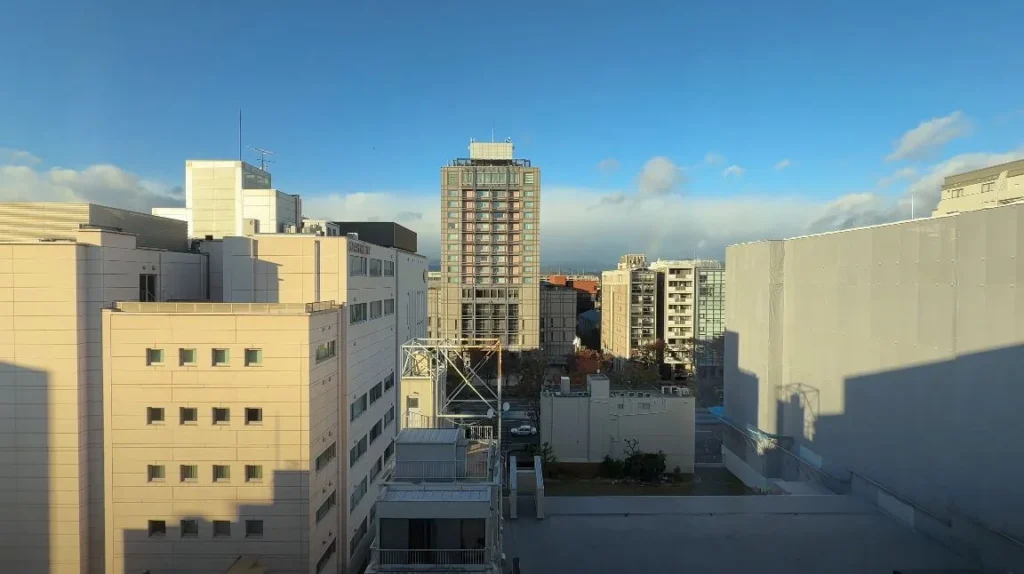
The JR Pass is supposed to make train travel easy. It does, if you can figure out which trains you can actually use it on. Rapid? Yes. Express? Sometimes. Super Express? No. Limited Express? Depends on the day, phase of moon and whether the train feels like it.
Got on the wrong train to somewhere (genuinely forgot where I was trying to go – it was day 8 and I was just following Google Maps like a religion). Ended up in this tiny town in the mountains. No English anywhere. The station had one employee who looked like he’d been there since trains were invented.
He pulled out this laminated sheet with phrases in English. “You are lost?” Yes. “You want to go where?” Good question. He made me tea while we figured it out using his flip phone to show me pictures of different stations. Turned out I was only one stop away from where I meant to be, just in the complete opposite direction. He walked me to the platform, waited until the train came. Wouldn’t accept my attempts at tipping. The bow as the train left nearly made me cry.
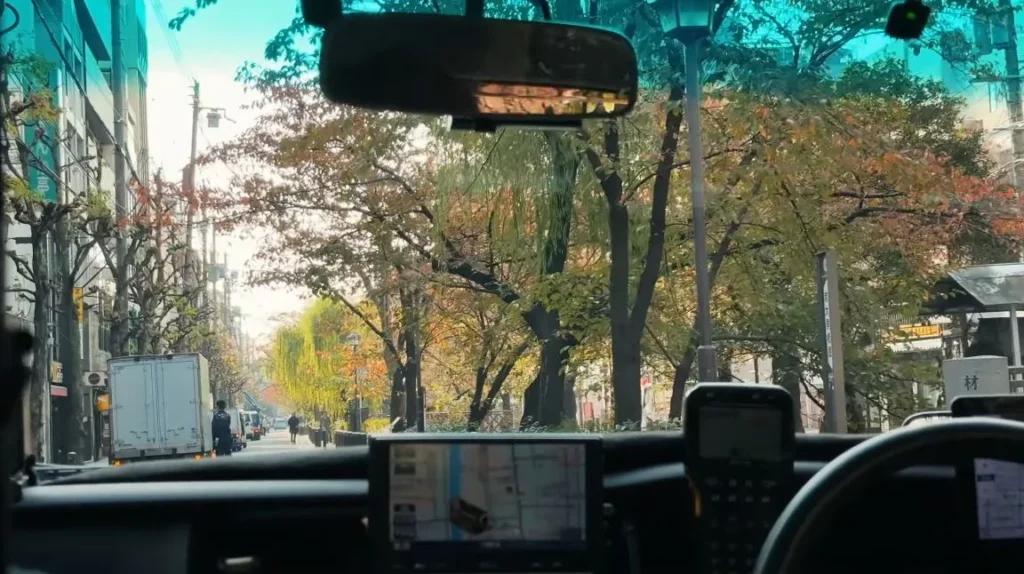
The buses in cities are their own beast. The pay-when-you-exit system confused me every single time. You take a ticket when you get on, it has a number, the fare display at front shows what your number costs, you pay exactly that amount when leaving. Sounds simple. I held up so many buses fumbling for exact change. The drivers are impossibly patient. NYC bus drivers would’ve physically removed me.
Cultural Observations from a Confused Tourist
Things that broke my brain:
The apologizing. Everyone apologizes for everything constantly. The konbini clerk apologized for my credit card taking too long to process (three seconds). A woman apologized to me for standing too close on a packed train where we were basically wearing each other. I started apologizing for making people apologize.
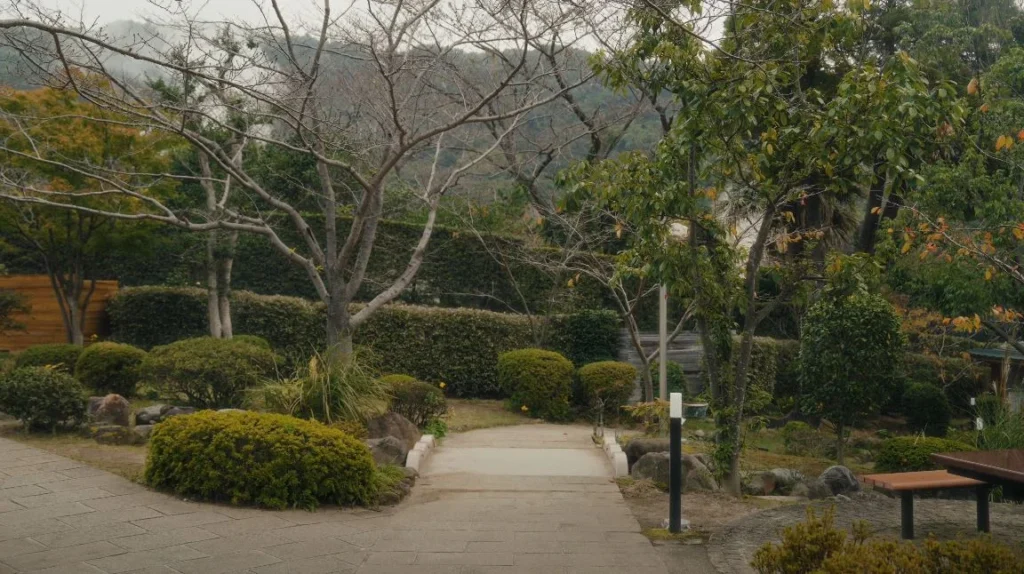
The gardens aren’t just pretty – they’re psychological warfare against anxiety. Every angle is calculated. That rock isn’t randomly placed; it’s been positioned by seventeen generations of gardeners to achieve optimal rockness. The moss isn’t wild; someone tends it with scissors probably.
Vending machines develop personalities when you’re jet-lagged. The one outside my Tokyo hotel became “Jeff.” Jeff had hot coffee at 5 AM when I needed it. Jeff never judged my choices. Jeff was always there. I miss Jeff.
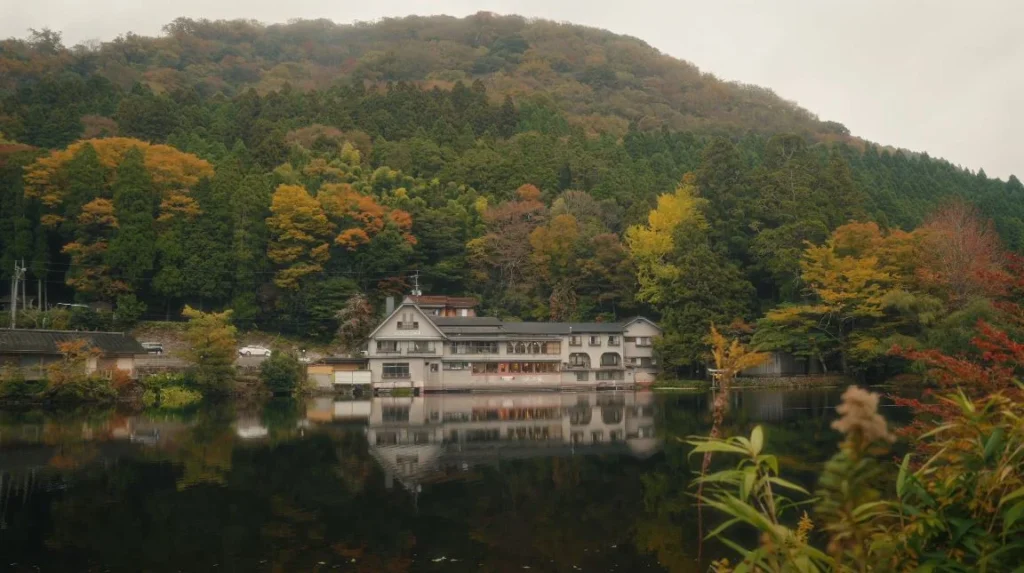
The concept of “reading the air” (kuuki wo yomu) – basically understanding unspoken social rules. I couldn’t read the air. I was air-illiterate. Eating while walking? Rude. Talking on the phone on trains? Social death. Blowing your nose in public? Might as well commit seppuku. But slurping noodles loud enough to wake the dead? Totally fine, encouraged even.
The Peculiar Magic of Getting Things Wrong
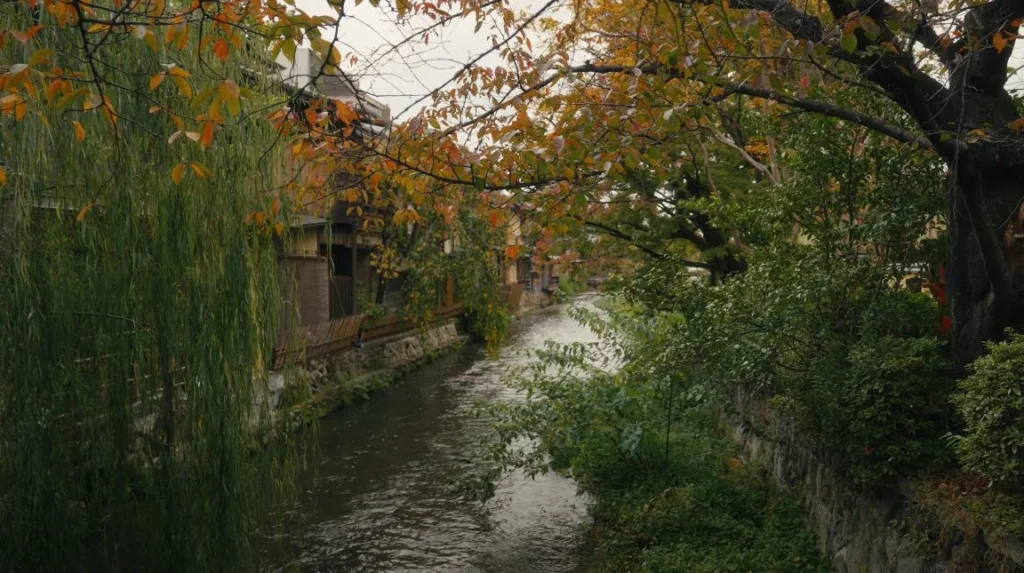
My last sunset in Kyoto, I climbed this hill to see Kiyomizu-dera temple. Got there just as they were closing. The security guard saw my defeated face, said something in Japanese and pointed to a path around the side. Not to the temple – that was definitely closed – but to this spot where you could see the whole city as lights started coming on.
Twenty minutes sitting on ancient stones, watching Kyoto transform from day to night. Three other people up there – an old man with a camera that probably cost more than my entire trip and a couple who weren’t talking, just existing in the same space comfortably. Nobody spoke. Nobody needed to.
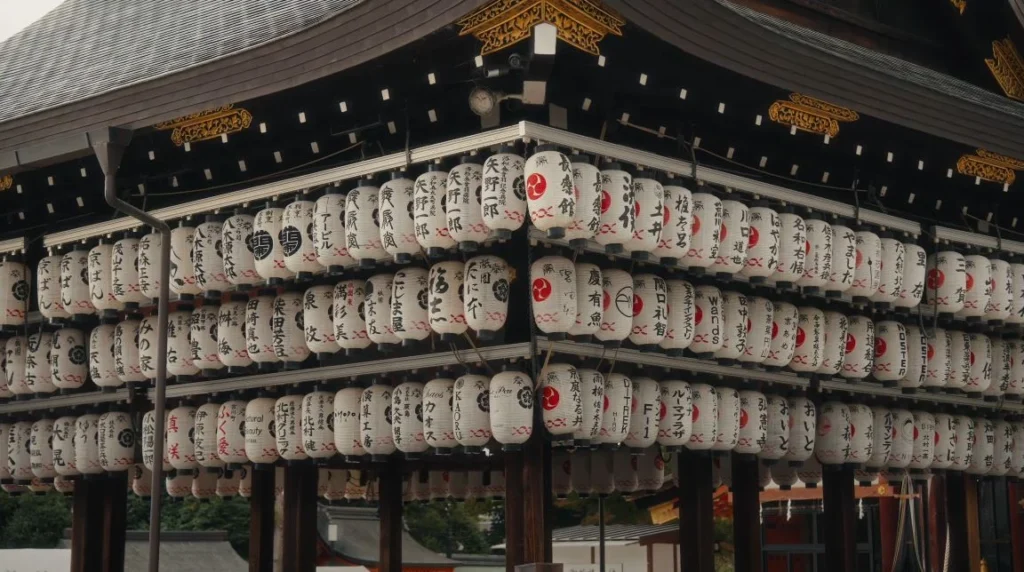
That’s the thing about Japan that doesn’t translate in photos or travel blogs. The silence that isn’t empty. The alone that isn’t lonely. The rules that seem restrictive until you realize they create a framework where 127 million people can coexist on a bunch of islands without murdering each other.
The food’s incredible, yes. The trains run on time, absolutely. The toilets are from the future, definitely. But it’s the seven seconds a taxi driver takes to compose himself before driving, the way nobody jaywalks even when streets are empty at 3 AM, the fact that lost wallets get returned with money intact – that’s the stuff that rewires your brain.
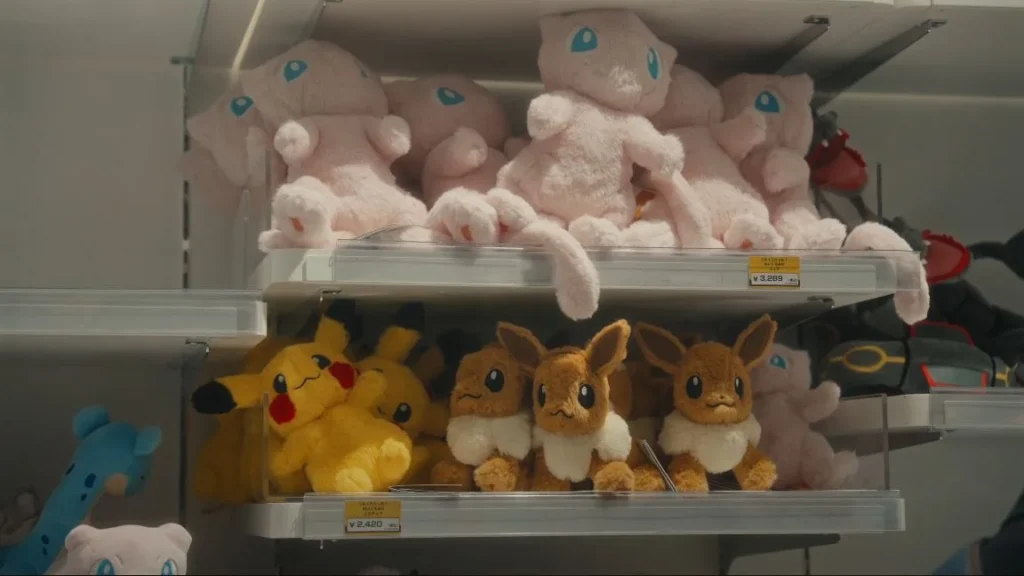
Bought a Mew plushie at the Pokemon Center on my last day. ¥3,999 for something I absolutely don’t need and had to cram into my already overstuffed backpack. The clerk wrapped it like it was made of gold, put it in a bag with handles that won’t rip, added a small card with care instructions I can’t read and thanked me with a bow that suggested I’d just funded her retirement.
That Mew’s sitting on my desk now, reminding me that somewhere, it’s acceptable to be a grown adult buying stuffed animals, to bathe with strangers, to eat things you can’t identify, to get on the wrong train and end up somewhere better than where you planned.
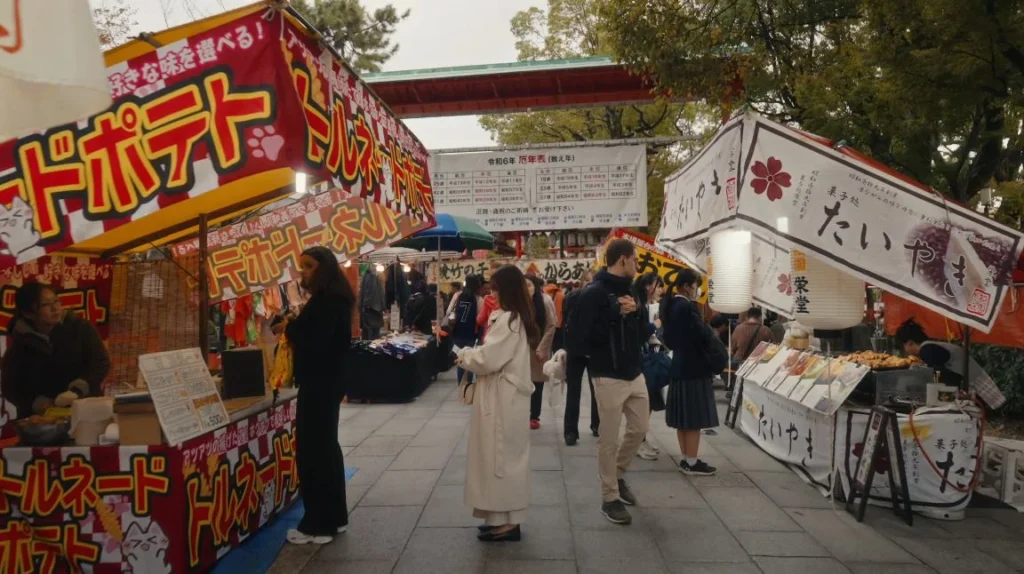
Final Observations
Japan doesn’t care if you understand it. It’s not trying to be accessible or make sense to outsiders. It just is what it is, functioning on it’s own internal logic that’s been refined over centuries. You can either fight it and have a frustrating time or surrender and let it reprogram your expectations.
I went expecting anime and robots and weird game shows. I found those, sure. But mostly I found a place that made me reconsider basic assumptions about how societies can work. About what courtesy means. About how food can be both simple and perfect. About how getting lost might be the only way to find something worth finding.
Would I go back? I’m already checking flight prices while writing this.
The Practical Stuff Nobody Tells You:
- Learn to bow. Not the full formal bow, just the little head nod. Use it constantly.
- Cash is still king despite being 2024. Have cash. More than you think.
- Tattoo-friendly onsen exist but require research. Or strategic towel placement.
- The JR Pass is worth it if you’re moving between cities, not for staying in one place
- Download Google Translate’s camera function. Point at menus, mind blown
- Shoes come off more than stay on. Wear socks without holes
- Convenience stores are better than 90% of restaurants elsewhere
- Miss your last train? Manga cafes are cheaper than hotels
- The weird stuff on menus is usually worth trying
- “Sumimasen” (excuse me/sorry) will get you through 80% of interactions
Language Survival:
- Arigatou gozaimasu (thank you) – use constantly.
- Sumimasen (excuse me/sorry) – use even more.
- Eigo ga hanasemasu ka? (Do you speak English?) – usually no, but they’ll try anyway.
- Kore wo kudasai (this please) – point and pray.
- Oishii (delicious) – makes cooks happy.
- Daijoubu (it’s okay) – when you inevitably mess up.
Japan’s not a country you visit. It’s a country that happens to you. You go home and nothing fits quite right anymore. Your convenience store seems pathetic. Your trains are always late. Nobody bows. The toilets are barbaric.
But you also go home with a phone full of photos you can’t explain, a head full of memories that don’t translate and a weird craving for rice balls at 2 AM that nowhere can satisfy.
That’s the real souvenir.

